Note from Priscilla: This is the second of my posts from the Rio+20 Earth Summit.
It was an art installation made by 1500 bodies—a huge painting on a canvas of silky sand at the Flamengo Beach in Rio next to the People’s Summit.
Amazon Watch sponsored the event, and it was coordinated by aerial artist John Quigley, working from an image created by artists of Brazil’s 235 indigenous peoples. Tribal leaders nominated the artists, who worked together for several months to choose the message and design the image.
Want to know how these huge aerial designs get put together? I did too! So I showed up ahead of time and got in on the setup.
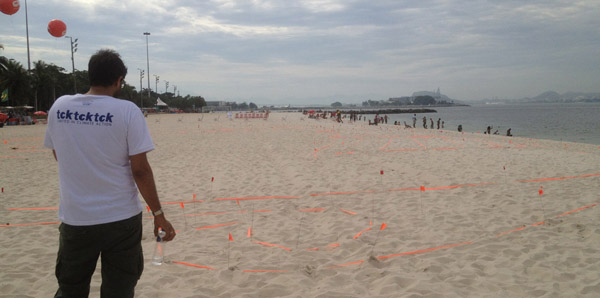 Here is the beach a little past noon: volunteers from tcktcktck.org and other orgs are setting orange flags in orange tape in the sand, following John’s directions.
Here is the beach a little past noon: volunteers from tcktcktck.org and other orgs are setting orange flags in orange tape in the sand, following John’s directions.
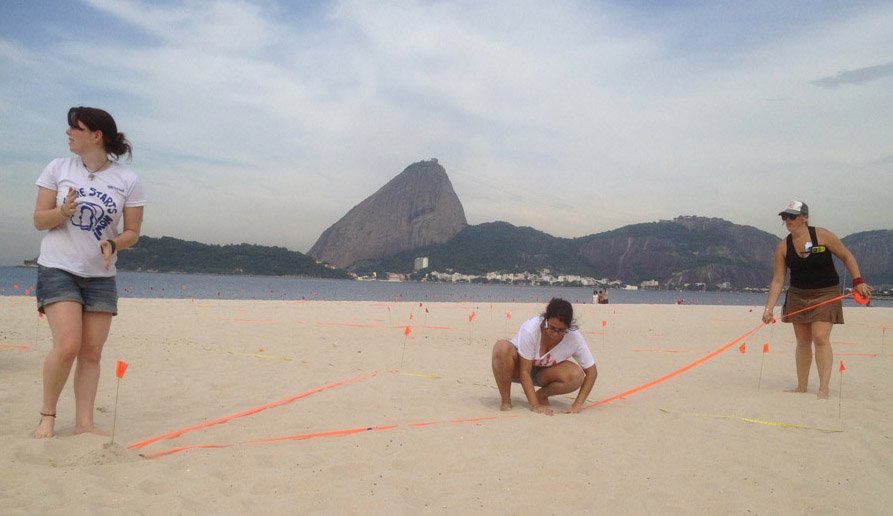 Shortly after 1:00 the people start to arrive: first dozens, then hundreds. Here’s John explaining what’s going to happen.
Shortly after 1:00 the people start to arrive: first dozens, then hundreds. Here’s John explaining what’s going to happen.
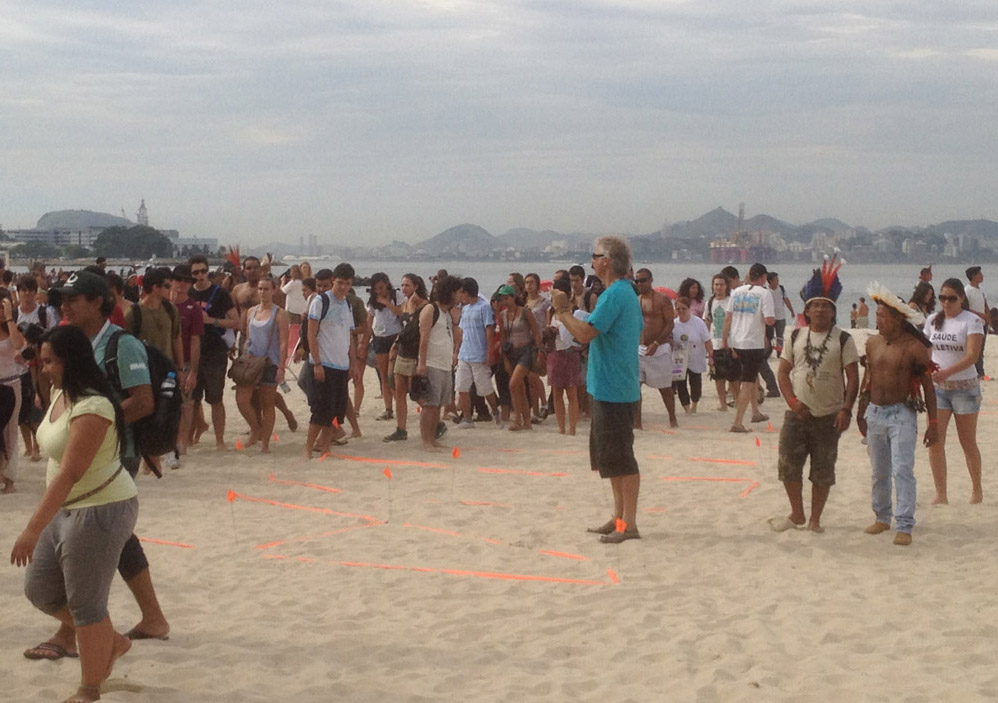
Members of Brazil’s indigenous groups file into the picture first.
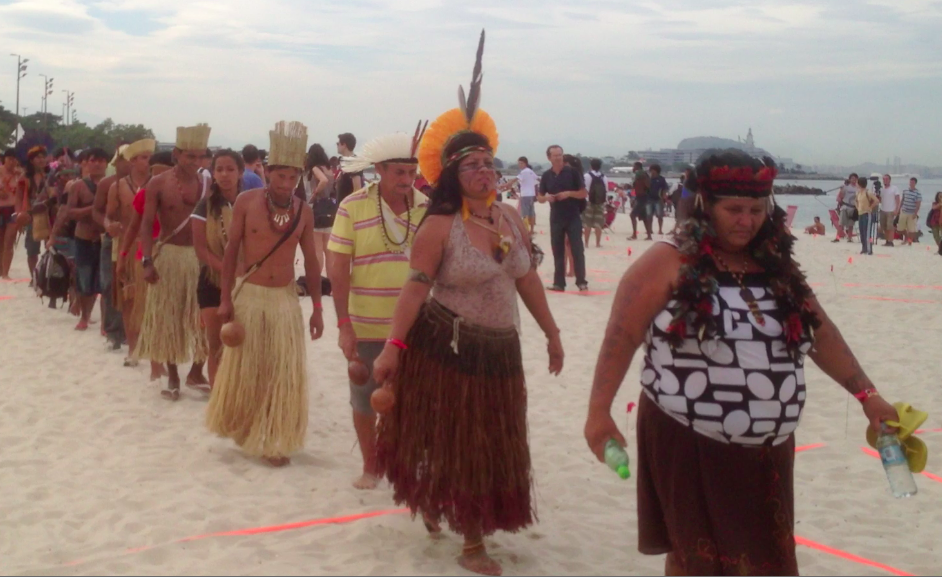


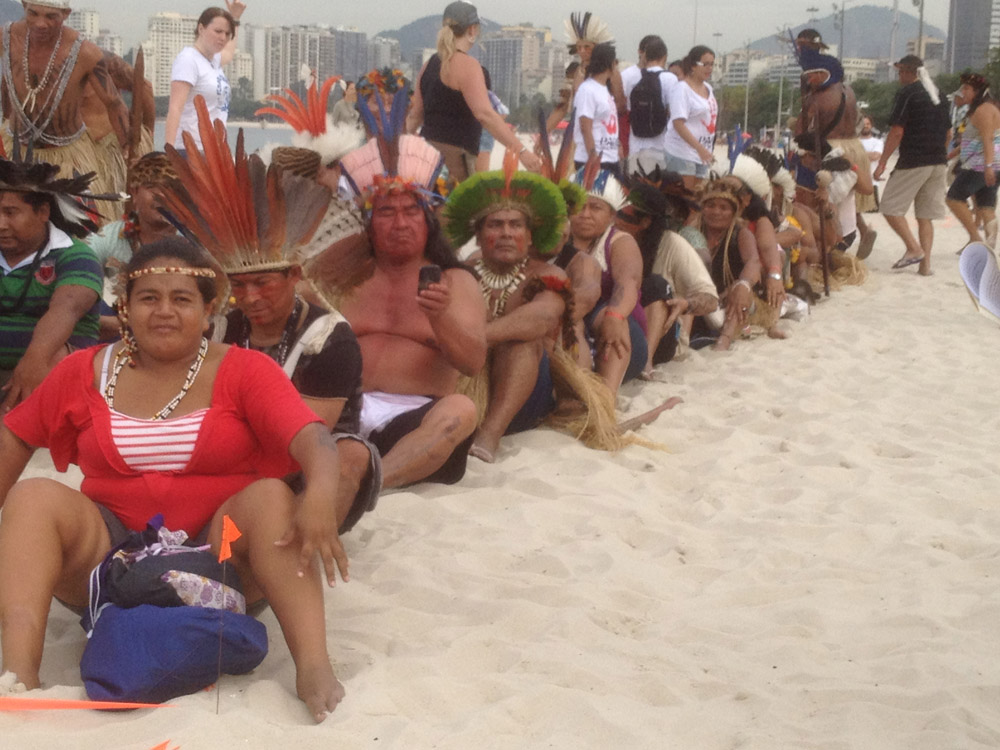
Drumming and rattling fill the air, a steady beat under the instructions getting shouted across the beach through megaphones.
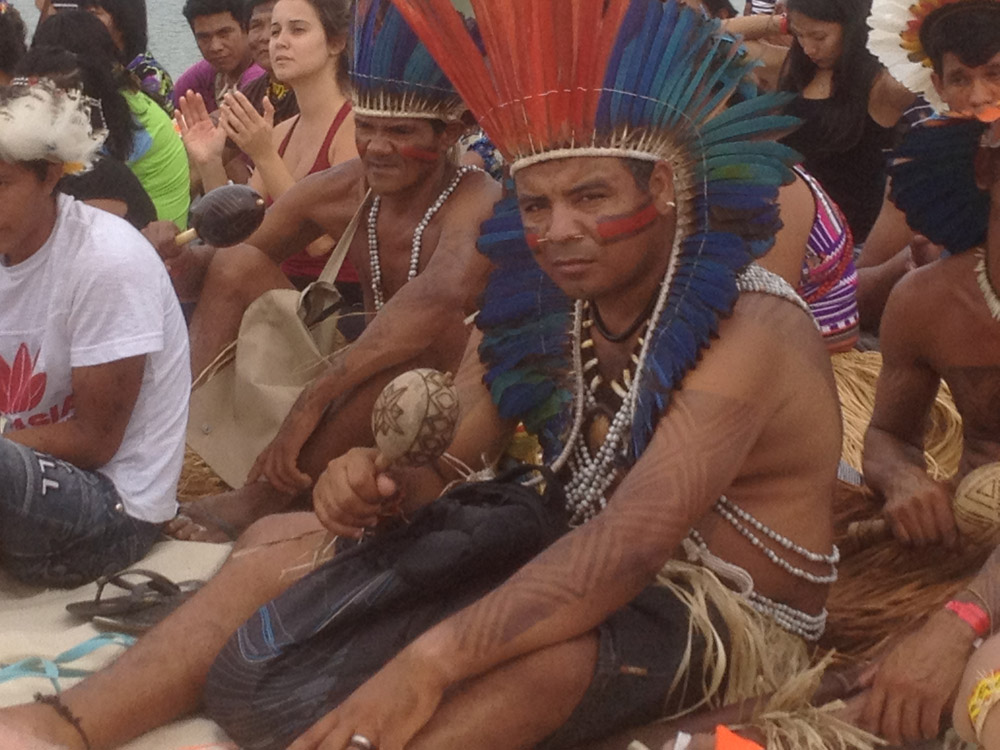
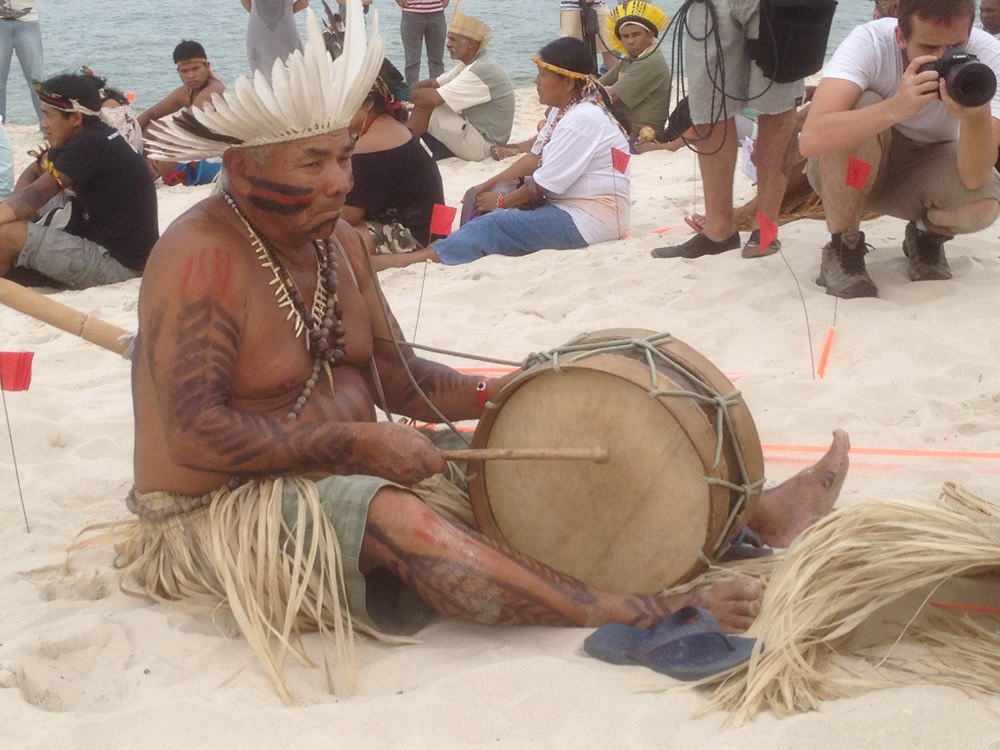
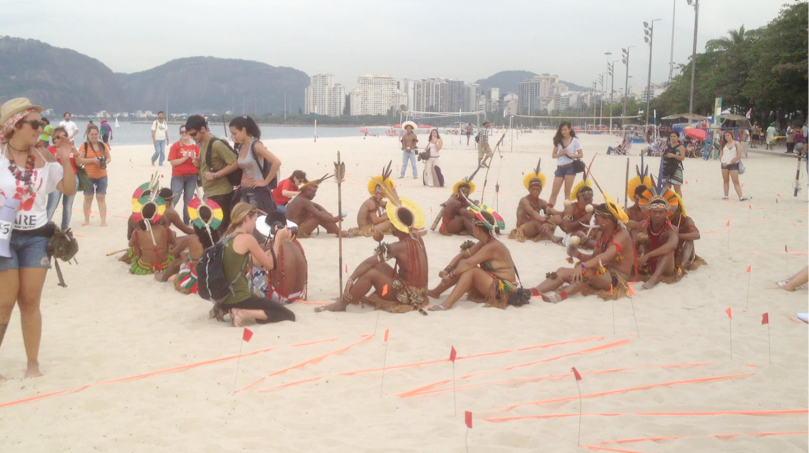
While people are getting settled at the center of the picture, hundreds more troop in to sit in rows and circles and lines. By now it’s nearly 2:00 p.m., and filming is to start at 2:15. No problem. We’re on schedule.


 What’s the picture going to be? Even those of us who saw the original drawing aren’t exactly sure.
What’s the picture going to be? Even those of us who saw the original drawing aren’t exactly sure.

 Finally I take a seat too. Here are people in the row next to me:
Finally I take a seat too. Here are people in the row next to me:
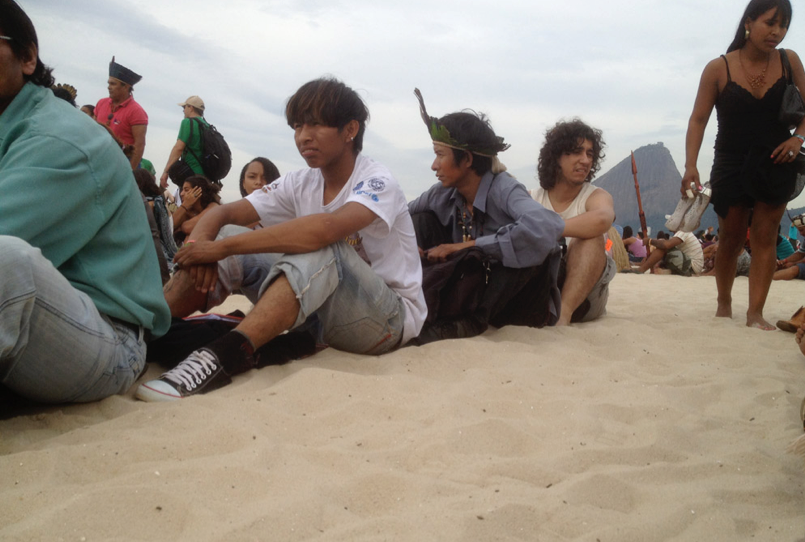 And here is Adriane on my left, a master’s student at the University of Saõ Paulo in international relations. Her English is excellent, though she doesn’t think so. I’ve been in Rio for two days, confined to the monosyllables that make up my Portuguese, so I’m grateful to be having a real conversation! Adriane plans to continue for a doctorate, and when she finds out I teach in a graduate program, her eyes light up. “Oh, you are exactly where I want to be!” she says. I have to agree: this is exactly where I want to be too.
And here is Adriane on my left, a master’s student at the University of Saõ Paulo in international relations. Her English is excellent, though she doesn’t think so. I’ve been in Rio for two days, confined to the monosyllables that make up my Portuguese, so I’m grateful to be having a real conversation! Adriane plans to continue for a doctorate, and when she finds out I teach in a graduate program, her eyes light up. “Oh, you are exactly where I want to be!” she says. I have to agree: this is exactly where I want to be too.
 A circle gets ushered into place around the picture, and then the cameras roll. As it happened, because of the security for the Summit, air space was closed off just a few days ago. So instead of the usual helicopter for an aerial picture, Spectral Q is using instead a remote-controlled camera that hums through the air like an enormous fly. It weaves back and forth overhead while people cheer.
A circle gets ushered into place around the picture, and then the cameras roll. As it happened, because of the security for the Summit, air space was closed off just a few days ago. So instead of the usual helicopter for an aerial picture, Spectral Q is using instead a remote-controlled camera that hums through the air like an enormous fly. It weaves back and forth overhead while people cheer.
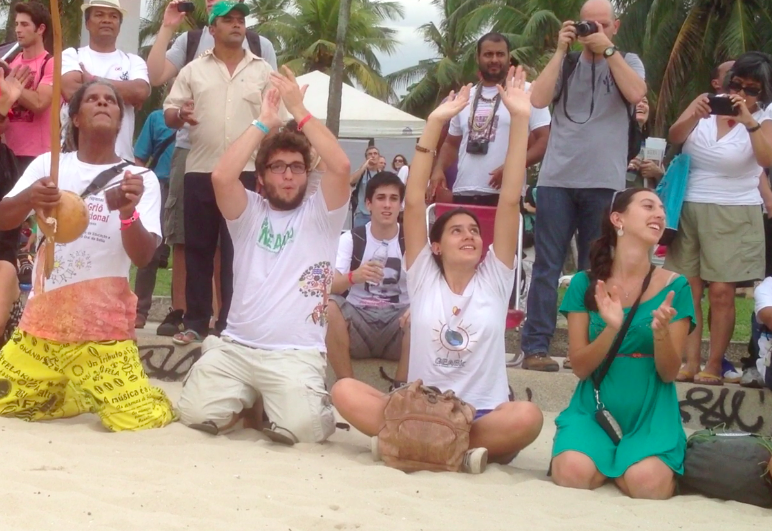 Finally, after an hour of sitting in the sand, baking and thirsty, we are ready for the project to be done. At the all-clear we cheer and get up and stretch and head for the coconut vendor at the street. Some gather in small groups taking their pictures with new friends.
Finally, after an hour of sitting in the sand, baking and thirsty, we are ready for the project to be done. At the all-clear we cheer and get up and stretch and head for the coconut vendor at the street. Some gather in small groups taking their pictures with new friends.

And what did the picture look like? Here it is, from the Amazon Watch website, copyright Spectral Q/Chico/Paulo:
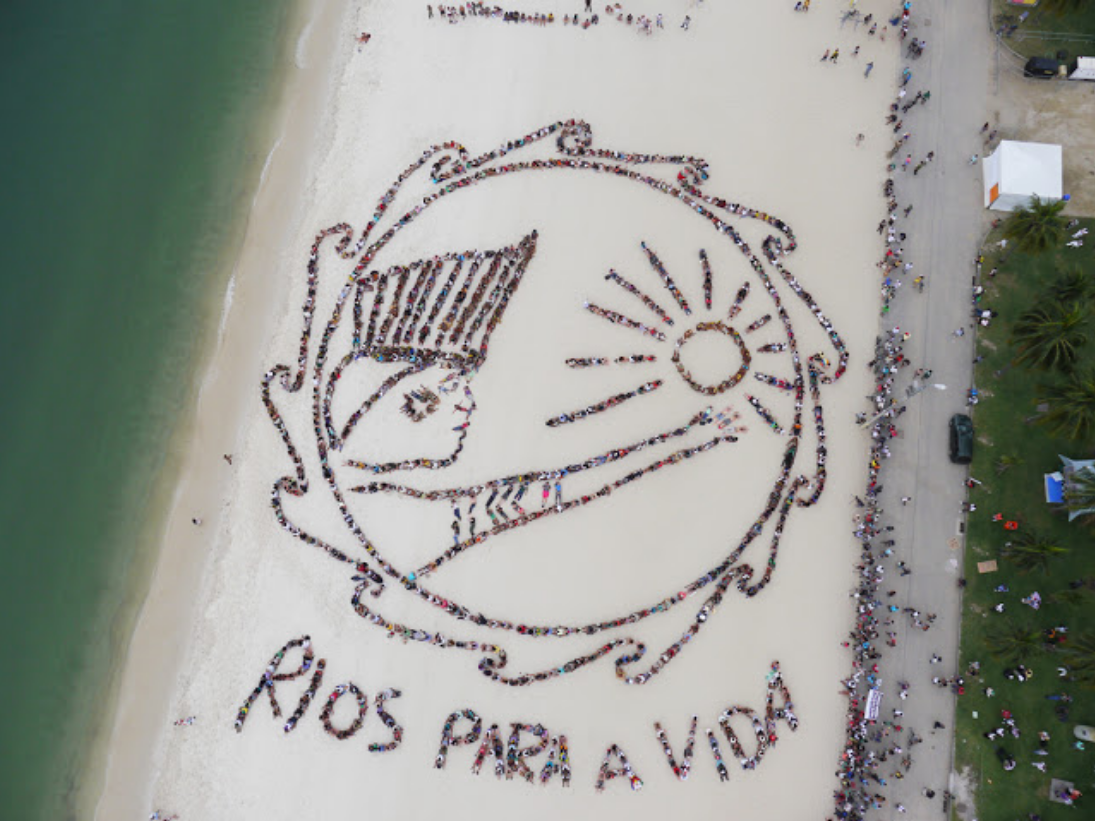 At the center, indigenous wisdom is holding up the sun. Around the outside, the circle of waves is flowing continuously, a hope and a prayer for all rivers to flow free, undammed. “Rios para a vida” means “Rivers for life,” and it celebrates water as the source of life for us all.
At the center, indigenous wisdom is holding up the sun. Around the outside, the circle of waves is flowing continuously, a hope and a prayer for all rivers to flow free, undammed. “Rios para a vida” means “Rivers for life,” and it celebrates water as the source of life for us all.
The image came together in the final week of planning, John says. “It is to remind us to connect with the people who know the land. No matter how many obstacles indigenous wisdom faces,” he says, “it will always come through in the end.”
And where am I? In a white shirt at the base of the D in VIDA, one of 1500 in this enormous painting made of human bodies. We’re coming together from all over the world to show our thanks and our hope for the rivers of Earth.